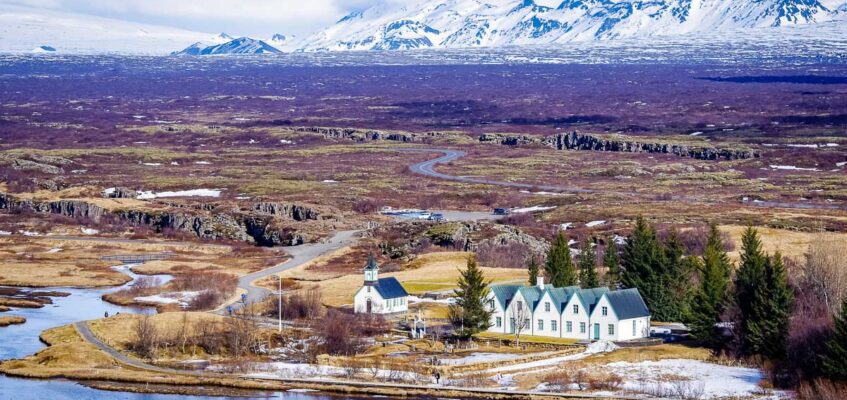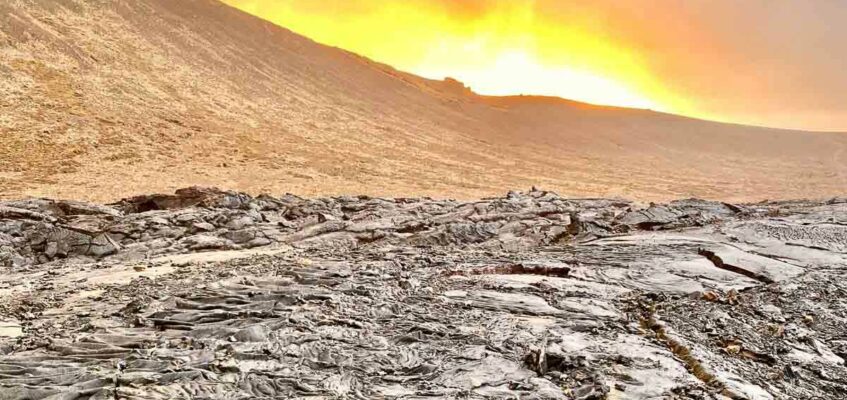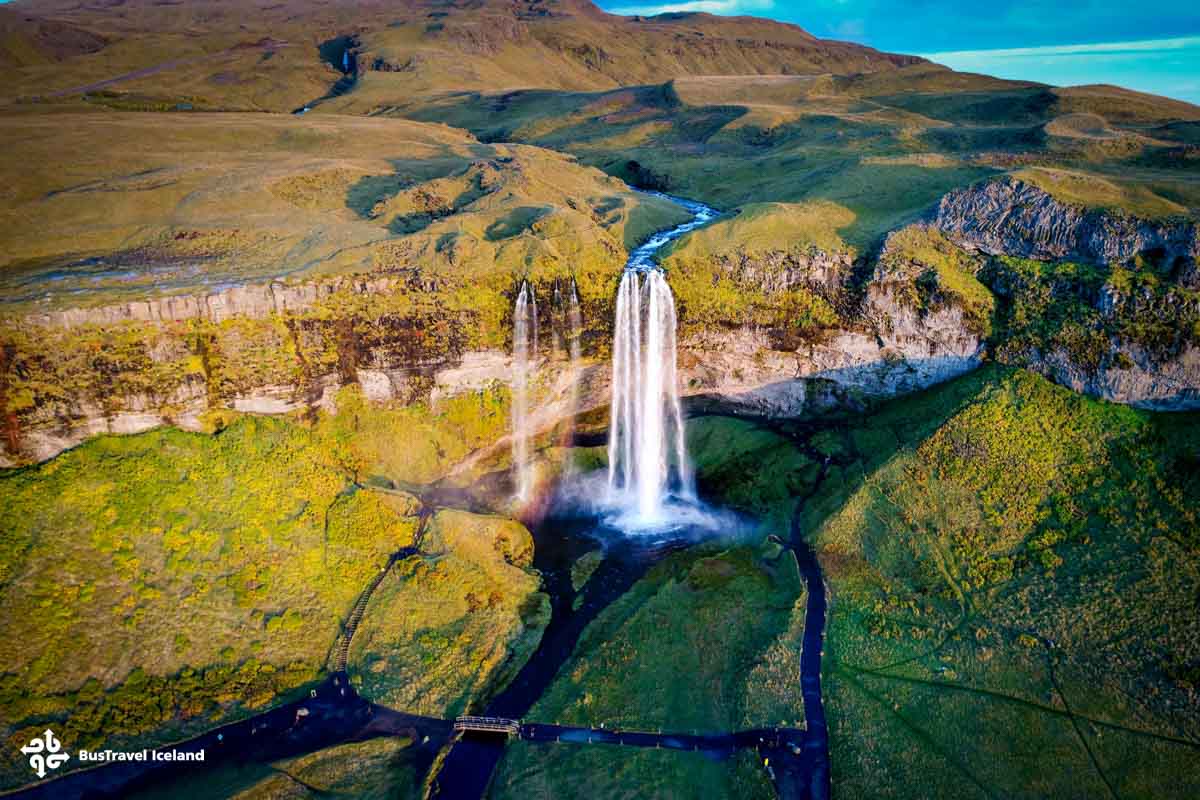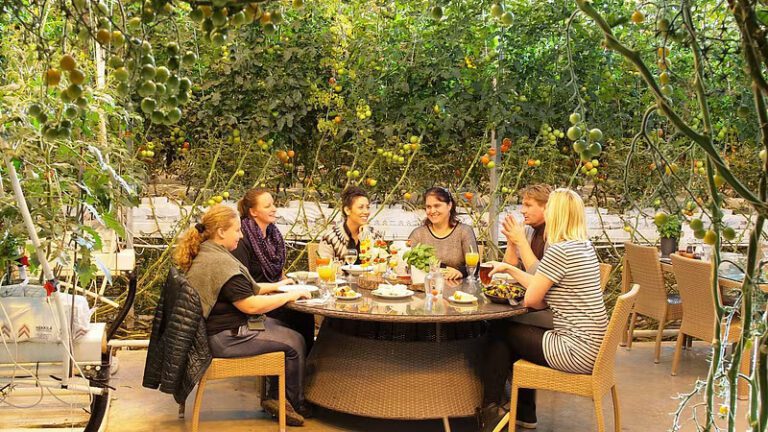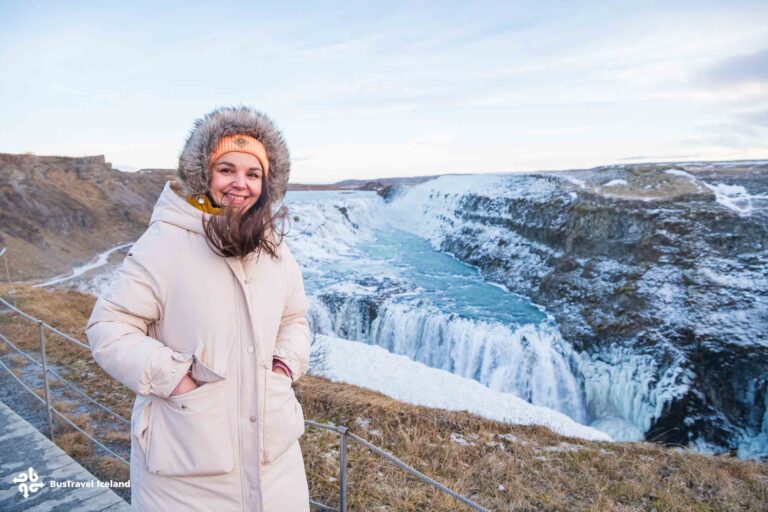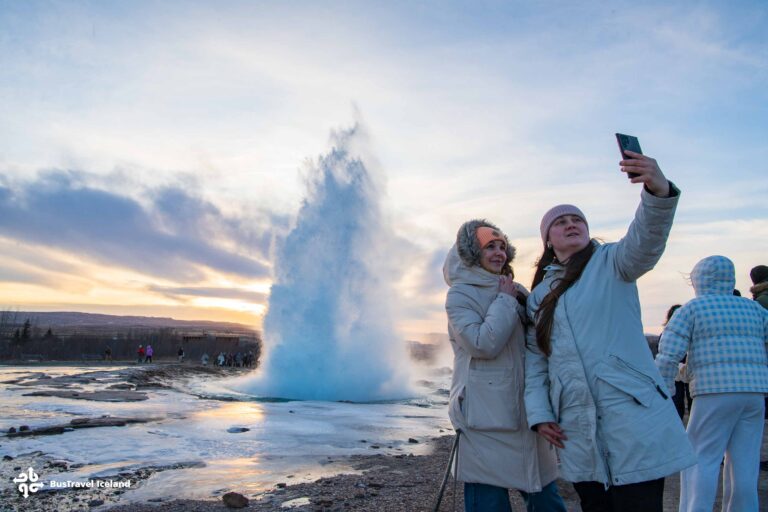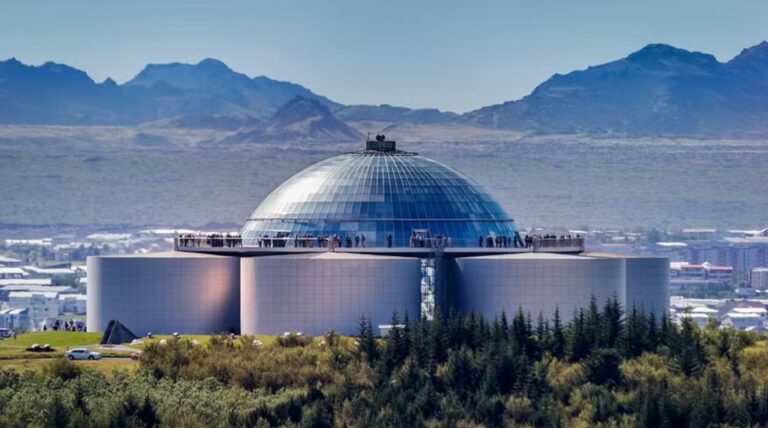What Is The Golden Circle In Iceland?
- Golden Circle Iceland
- 4 Oct 2023
Before even setting foot on this breathtaking island, the echoes of Iceland's Golden Circle have likely reached your ears. But what exactly is the Golden Circle? Why does it enjoy such renown and popularity? And what makes it an extraordinary journey?
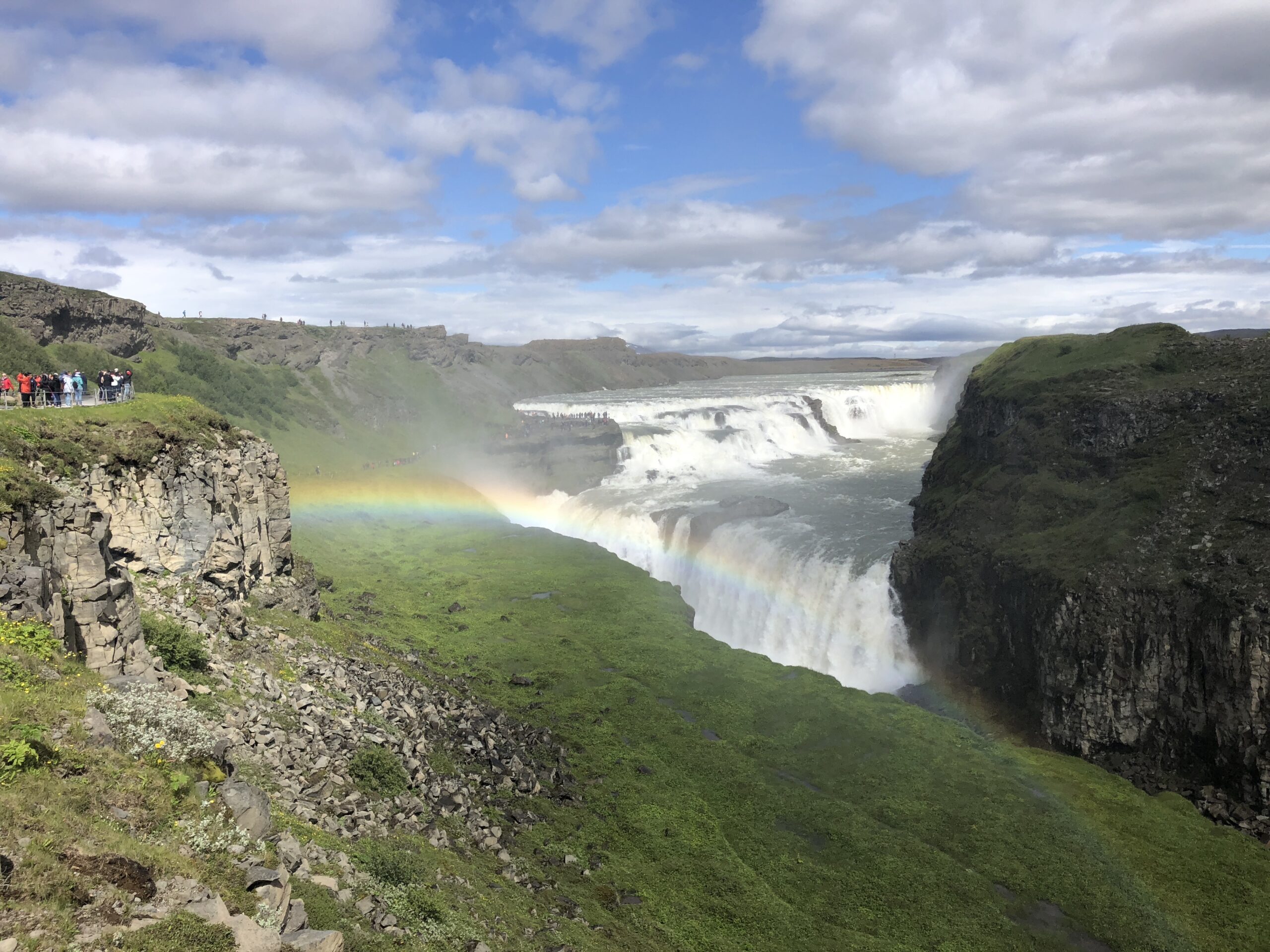
As my first adventure upon arriving in Iceland, the Golden Circle captivated me with its varied landscapes, an array of distinct sites, and a rich historical tapestry that threads through Iceland’s cultural fabric. Join me on a journey to immerse yourself in the very essence of Iceland’s natural wonders along the mesmerizing Golden Circle route.
Major Attractions of the Golden Circle of Iceland
Close to Reykjavik, this iconic route showcases three prominent attractions that define the country’s breathtaking sights. Marvel at the awe-inspiring Gullfoss waterfall, explore the historically and geologically rich Thingvellir National Park, and experience the stunning beauty of the Geysir geothermal field. As you traverse this route, you’ll also encounter a cluster of charming smaller attractions, making the Golden Circle an ideal day tour from Iceland’s capital.
Gullfoss Waterfall
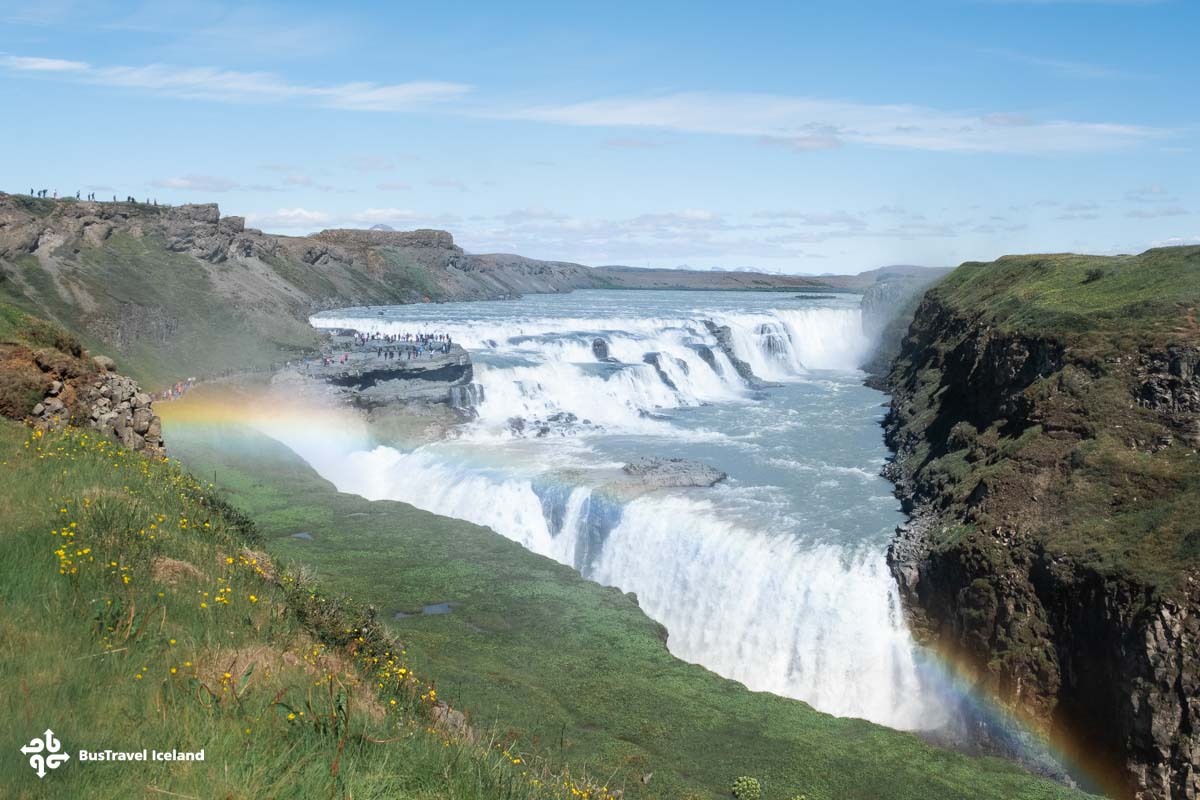
The magnificent Gullfoss waterfall is located in the heart of Iceland, with its awe-inspiring appearance and breathtaking power, it has proudly earned its place as one of Iceland’s most popular and beloved natural landmarks.
As you approach the Gullfoss waterfall, the thunderous roar of cascading water grows louder, building anticipation for the spectacle that lies ahead. Gullfoss, which translates to “Golden Falls,” lives up to its name as the glacial meltwater plunges into a narrow gorge with a mesmerizing golden hue.
Spanning approximately 32 meters (105 feet) in height, Gullfoss waterfall boasts two stages of cascades, creating a dramatic display of force and elegance. The first stage is a shorter cascade with a height of 11 meters (36 feet), and the second drop is of 21 meters (69 feet) in height. Standing at the viewing platforms, you can feel the mist on your face as the sheer power of the waterfall echoing through the air.

The Hvítá river originates from Iceland’s second-largest ice-cap, the Langjökull glacier, and gracefully meanders through the country’s scenic landscapes before reaching Gullfoss waterfall. As the glacial waters cascade down with powerful momentum, they create a stunning spectacle within the Hvítárgljúfur canyon, leaving visitors gazing in awe. The surrounding landscape enhances the beauty of Gullfoss with its stark contrast. Rugged cliffs and sweeping view paint a picture of raw Icelandic wilderness, providing a stunning backdrop for the waterfall’s magnificence.
Gullfoss waterfall’s captivating history is steeped in the legacy of a true pioneer and Icelandic environmentalist, Sigríður Tómasdóttir. As the daughter of the farmer who owned the falls, she fiercely fought to shield Gullfoss from being harnessed for hydroelectric power. Thanks to her heroic and unwavering efforts, Gullfoss stands today in its pristine, untouched natural state, leaving a lasting impression on visitors from every corner of the globe.

Visiting Gullfoss is a sensory journey. The thunderous roar of the water, the delicate mist on your skin, and the enchanting sight of rainbows dancing in the spray create a mesmerizing ambiance. In the warmer months, vibrant wildflowers bloom along the riverbanks, attracting a diverse range of bird species and adding a touch of color to the scene.
During the winter months, Gullfoss transforms into a sparkling ice sculpture as the cascades freeze. The icy scene creates an unforgettable winter wonderland, showcasing Iceland’s nature in motion.
Whether visited during the summer’s midnight sun or the winter’s icy crispy air, Gullfoss holds timeless charm. It’s a place where nature’s power and beauty meet, leaving a long-lasting impression on all who stand in its presence.
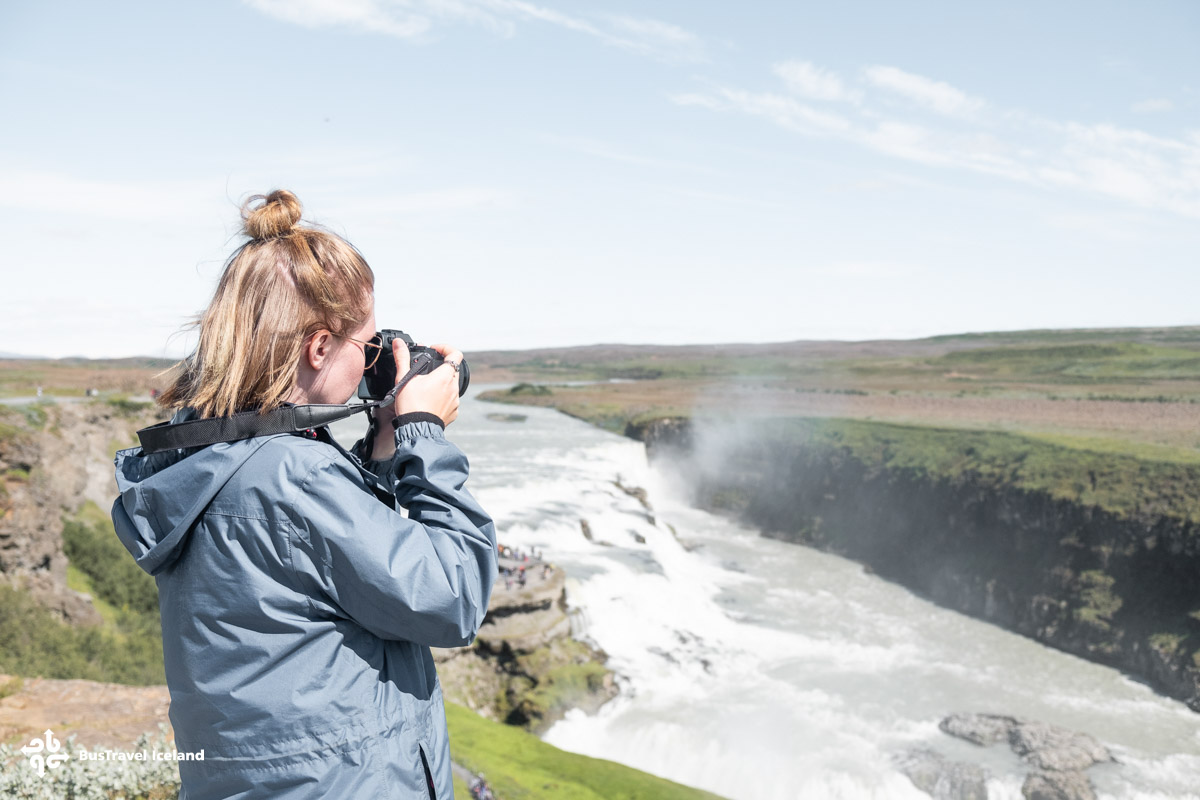
Thingvellir National Park
Listed as a UNESCO world heritage site, a unique place only found in Iceland, Þingvellir National Park seamlessly unites history and geology amidst the breathtaking Nordic island’s nature. As you step into this remarkable area and take a leisurely stroll through each corner of the national park, you are immersing yourself in its diverse landscapes and interesting stories.
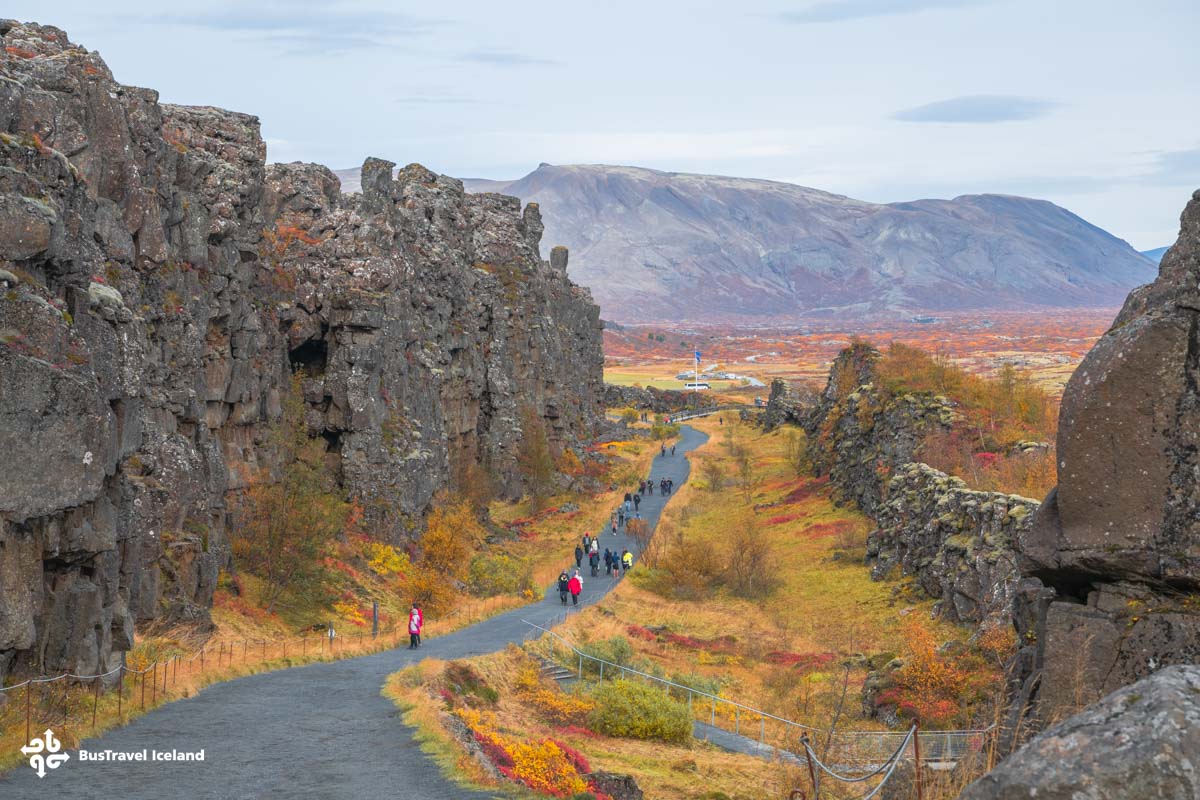
At the heart of Thingvellir stands the commanding Almannagjá Gorge, a dramatic rift that cleaves through the park. This very location places you straddling the North American and Eurasian tectonic plates, perpetually diverging at a rate of 2 centimeters annually.
Extending extensively through the middle of the Atlantic Ocean, the rift is a part of the Mid-Atlantic Ridge. While most of the ridge lies submerged, the only visible part graces the territory of Iceland, making it a truly unique sight. The walking path leads you close to experience the spectacular place.
Near the Almannagjá Gorge lies the equally wonderful Silfra Fissure, an Icelandic gem renowned for its exceptional underwater visibility, offering a must-try for diving and snorkeling enthusiasts. The glacier water’s astonishing clarity stretches up to 100 meters in its best condition, thanks to Iceland’s volcanic landscape. The porous ground acts as a natural filter, allowing glacial meltwater from Langjokull to travel for decades to reach here with its most clean state. When you embark on an incredible experience, you are swimming between two diverging worlds.

The Öxarárfoss waterfall lies further into the park. It’s a tranquil cascade gently descending into the Öxará River. As you follow the running water, you will get a sweeping view of the serene spot that holds historical significance, as it lies in once being the site of Iceland’s first parliament, Alþingi, established in 930 AD.
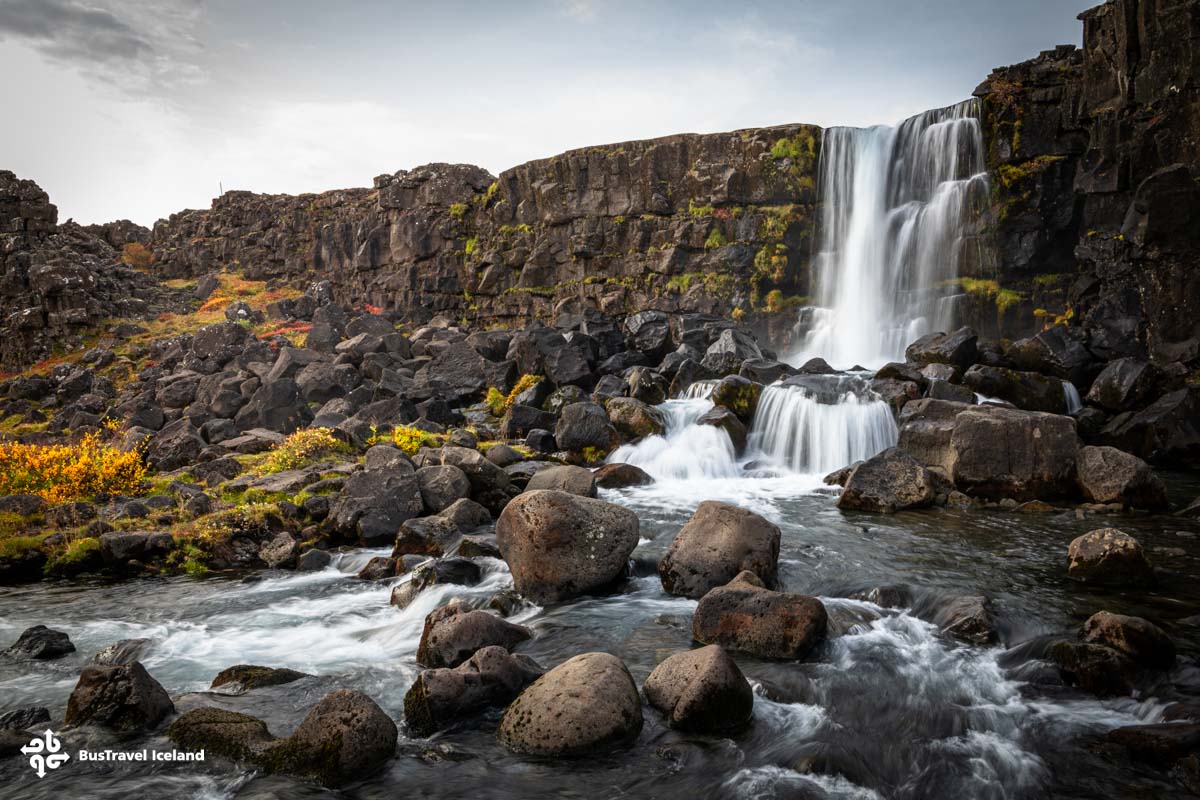
The path leads to Þingvellir’s expansive plains, where the Law Rock (Lögberg) stands tall as the seat of the Lawspeaker who presided over the assembly. This sacred site witnessed speeches, judgments, and the forging of laws governing Icelandic society for centuries.
Next up is the towering rock faces of Nikulásargjá Gorge, revealing hidden history within their crevices. Also known as Peningagjá (money gorge), you can see there are many coins sparkling underwater, its clear and calm water is a highlight and unique to Thingvellir.
Crossing the streams, you will reach Þingvallakirkja, the Thingvellir church, a landmark structure in Thingvellir National Park, with its cultural presence narrating the rich history of this area. Originally erected in the 11th century, Thingvellir church symbolized the eventual embrace of Christianity by the Icelandic settlers who established a society around 874 BC. Thus, the church and bell tower were built near Iceland’s government operations at that time. The church site includes a modest cemetery with around 30 graves, among them, the resting places of two renowned Icelandic poets.
![Thingvellir National Park in Autumn The glorious Autumn colors of the beautiful Thingvellir National Park, the Golden Circle of Iceland [Photo by Yanshu]](https://bustravel.is/wp-content/uploads/2023/10/Thingvellir-National-Park-in-Autumn-YSL_3692.jpg)
No journey through Thingvellir would be complete without exploring Lake Þingvallavatn‘s beautiful shores. Iceland’s largest natural lake, with 84 km² in surface size and 114 meters in its greatest depth. As a popular recreational spot, Lake Þingvallavatn is great for fishing, with anglers seeking to catch Arctic char, brown trout, and other fish species that thrive in its clear waters. Additionally, the scenic lake also attracts visitors for hiking, birdwatching, and boat tours.
Geysir Geothermal Area
In the mesmerizing embrace of the Geysir geothermal area, you’ll discover a field dotted with bubbling hot springs, a vibrant kaleidoscope of colors, and the dramatic spectacle of erupting geysers. Prepared to be charmed by the enchanting interaction of nature’s elements, where earth’s forces meet in a breathtaking display.

Located in the Haukadalur Valley, Geysir is home to some of Iceland’s most extraordinary geothermal phenomena. The star of the show is Strokkur, a geyser that shoots scalding water high into the air every 5 to 10 minutes, reaching heights of up to 40 meters (131 feet). It’s a breathtaking experience seeing Strokkur’s spectacular eruptions, as the sights and sounds of it is a true sense of adventure.
However, Strokkur is far from the only character in this mesmerizing geothermal performance. Adjacent to Strokkur lies the renowned Great Geysir, after which all others are named in English. Once, this geyser was so dynamic that its eruptions reached a staggering 70 meters (230 feet) into the sky. Yet, the underground shifts that obstructed its channel have rendered the Great Geysir dormant since 2000, turning it into a serene turquoise basin, a reflective vision to its illustrious past.

As you stroll through the geothermal area, you’ll encounter countless hot springs bubbling and steaming, their colors shifting in a diverse display. The vibrant hues are caused by the presence of different minerals in the water, creating a painter’s palette of blues, greens, and oranges.
Visitors should exercise caution, as the boiling water in these hot springs can reach temperatures of up to 100°C (212°F). Staying on designated paths ensures both your safety and the preservation of this delicate environment.
Nearby, you’ll find the Geysir Center, a modern facility offering informative exhibits on geothermal energy and Iceland’s volcanic landscapes. It’s a chance to deepen your understanding of the natural forces that shape this captivating land. It also hosts a dining area and some gift shops. So many Golden Circle day tours choose to stop here for lunch break.

Planning your visit to Iceland’s Golden Circle
The Golden Circle tour, an essential Icelandic journey, unveils iconic geothermal-powered sights. Ideal for a day trip from Reykjavik, effective planning maximizes your day and allows you to fully enjoy the amazing sights.
Best time to visit the Golden Circle
Each season has its own charm when it comes to visiting Iceland, although some seasons have better weather than others, which is important for your travel experience.
The best time to visit Iceland’s Golden Circle is during the summer months, from June to August. This period offers milder weather, longer daylight hours, and more accessible roads to explore attractions like Gullfoss waterfall, Geysir geothermal area, and Thingvellir National Park. Additionally, the warmer weather enhances outdoor activities and sightseeing, making it a perfect time to experience the Golden Circle to its fullest. The downside is that this is also the peak tourist season, so popular sites might be more crowded.
The winter months in Iceland are displaying a completely different kind of feeling, especially when the land is covered with snow. It’s beautiful, serene, and unforgettable.
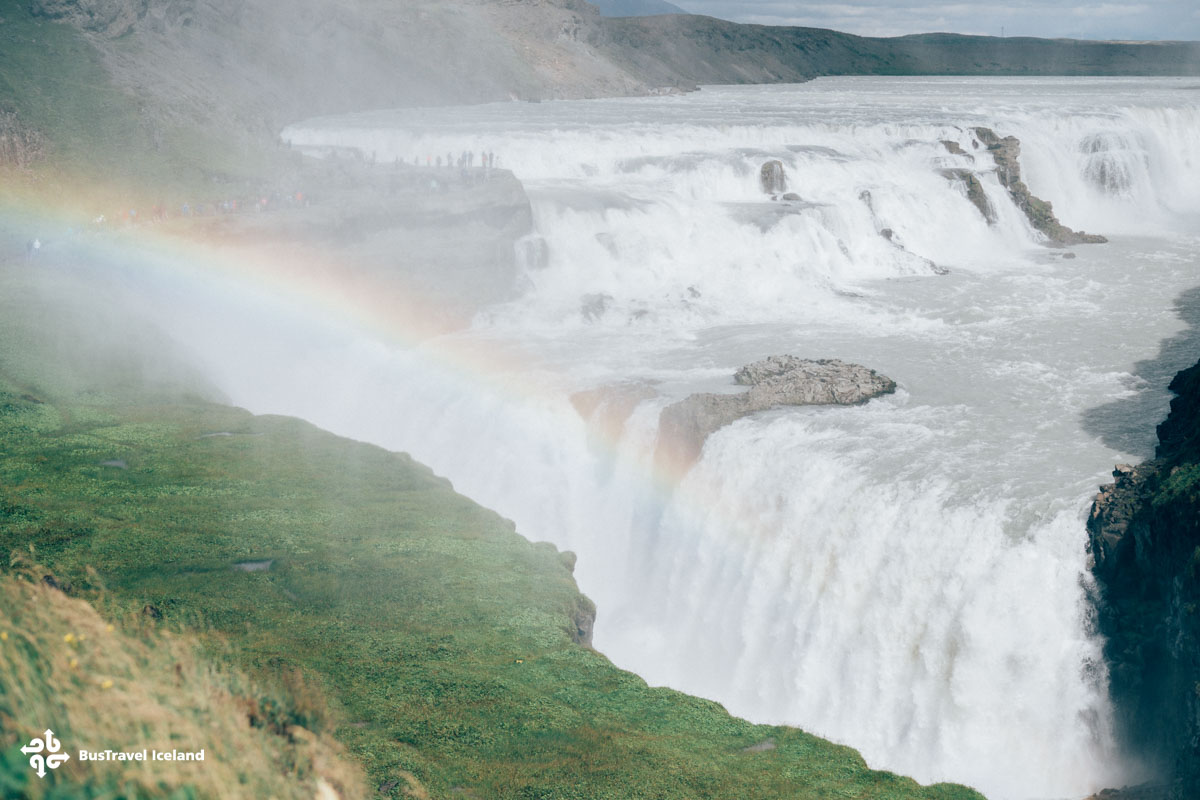
Self-Drive vs Group Tours
The most frequently asked question revolves around whether you can go on the Golden Circle tour independently. Following closely is the query about the duration of the Golden Circle tour in Iceland. Let’s delve into both choices: self-driving or opting for a guided tour.
A guided tour to the Golden Circle attractions is straightforward and compact, which mostly covers the three major sights we mentioned above and one extra as it’s rising into popularity lately, the Kerid volcanic crater lake. Along your ride, your tour guide will share information about Iceland’s geology, culture, and interesting folklore. You can sit back and enjoy your scenic ride into Iceland’s heart.
Your guide will plan your day tour with comfort stops and lunch or snack stops. It’s an easy experience for a relaxed day in Iceland, no hustle coming from all that planning.
For a self-drive adventure, embarking on a Golden Circle tour doesn’t need a 4X4 rental car, unlike highland excursions. Crafting an itinerary is equally straightforward, given the seamless connectivity of the three primary attractions via well-maintained roads.

Additional Attractions on the Golden Circle Route
The entire region that the Golden Circle Route covers has many lesser-known attractions. Volcanic crater lake, waterfalls, and geothermal greenhouses. Let’s go through a few now.
Kerid Volcanic Crater Lake
Kerid Volcanic Crater Lake graces Iceland’s Golden Circle with its surreal landscape. It is a stunning turquoise lake nestled within the caldera’s ancient walls. With contrasting red and green hues adorning the crater’s slopes, it’s a painter’s palette brought to life. Formed around 3,000 years ago, Kerid invites exploration, its azure waters offering reflections of the sky above.
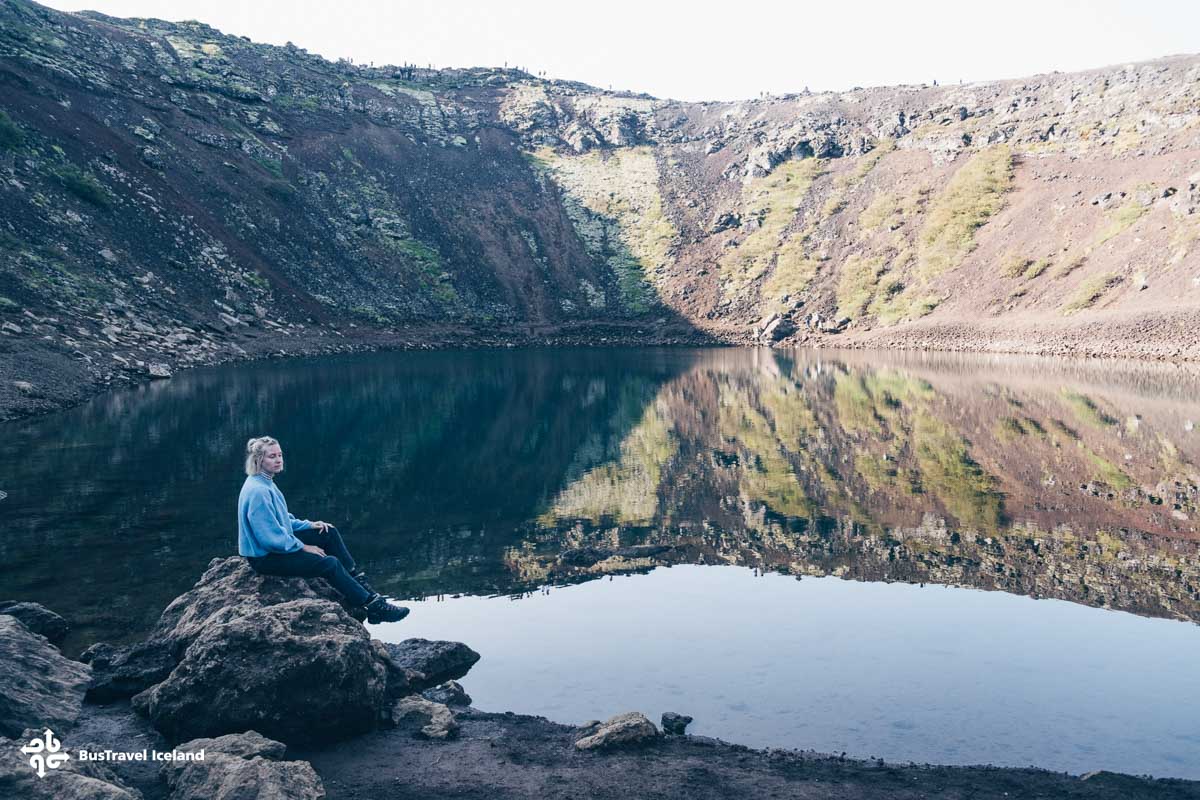
A paved path traces the rim and leads down to the lake’s edge, revealing fascinating textures of the caldera’s sides. Popular Golden Circle day tours often include Kerid crater Lake as a stop along the iconic route. Its increasing popularity offers both a picturesque photo opportunity and an unexpected adventure into Iceland’s volcanic land.
Friðheimar Tomato Farm and Stable
At Friðheimar Farm, a greenhouse wonderland comes to life. Here, an enchanting greenhouse wonderland unveils the art of cultivating tomatoes in Iceland’s unique climate. Wander through aromatic rows of tomato plants, where sustainability and innovation intertwine. Delve into the secrets of tomato cultivation and savor the culinary delights crafted from these ruby treasures.
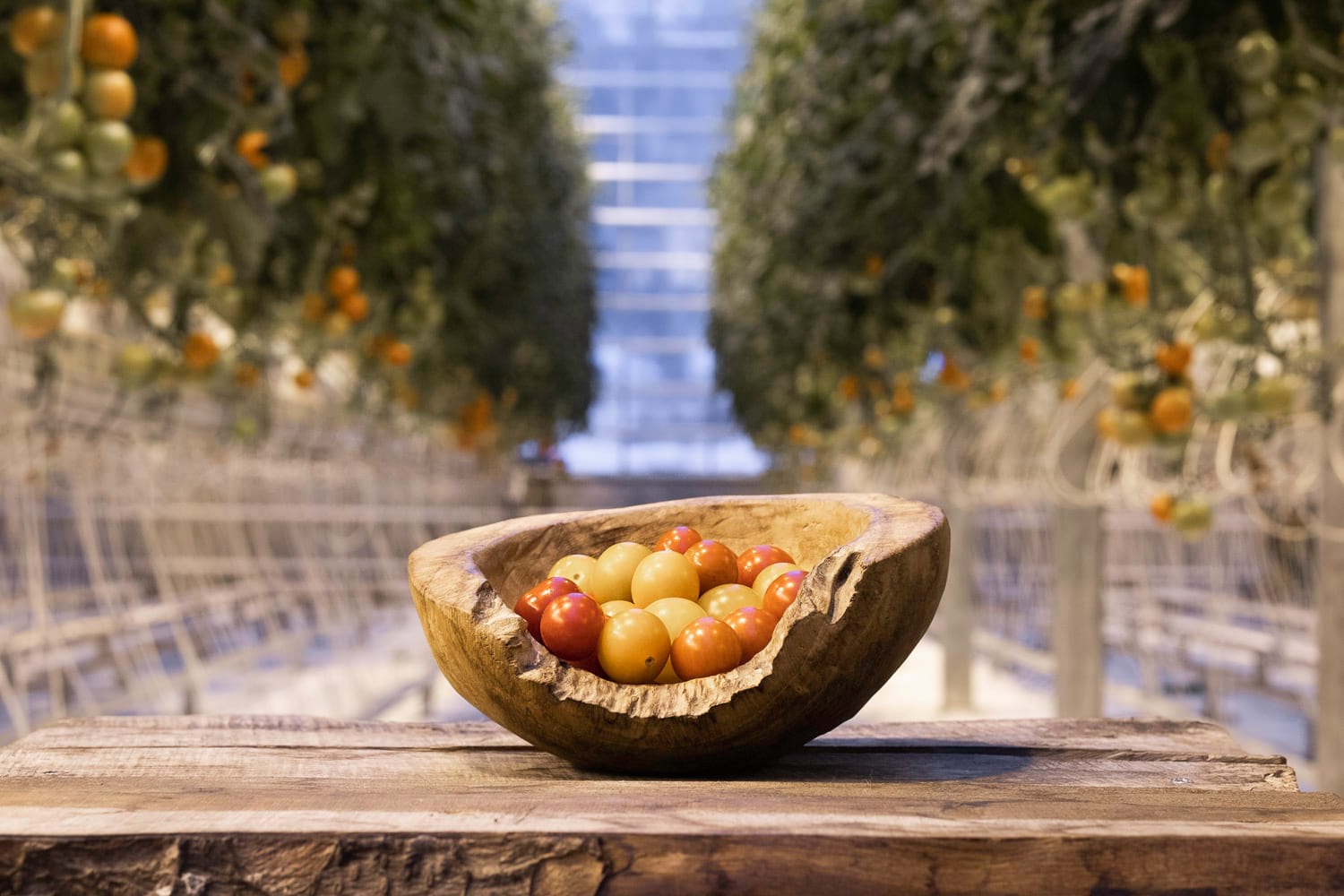
Then, immerse yourself in the equine world, witnessing the beauty of Icelandic horses amidst stunning landscapes. Witness their grace and spirit, a testament to the farm’s dedication to preserving this cherished heritage. Friðheimar Farm beckons you to discover nature’s bounty and the harmonious dance between agriculture and the equestrian world.
Secret Lagoon – Gamla Laug
The Secret Lagoon, or “Gamla Laugin” in Icelandic, carries a rich history that adds to its unique charm. It was established in 1891 at Hverahólmi, making it one of Iceland’s oldest geothermal pools. Initially, it served as a local gathering place for nearby residents, offering a natural escape for bathing and socializing.
Over the years, the Secret Lagoon has retained its authentic charm while also welcoming travelers seeking an off-the-beaten-path geothermal experience. Its historical significance and untouched spot make it a fascinating destination within the Golden Circle, bridging the past with the present.
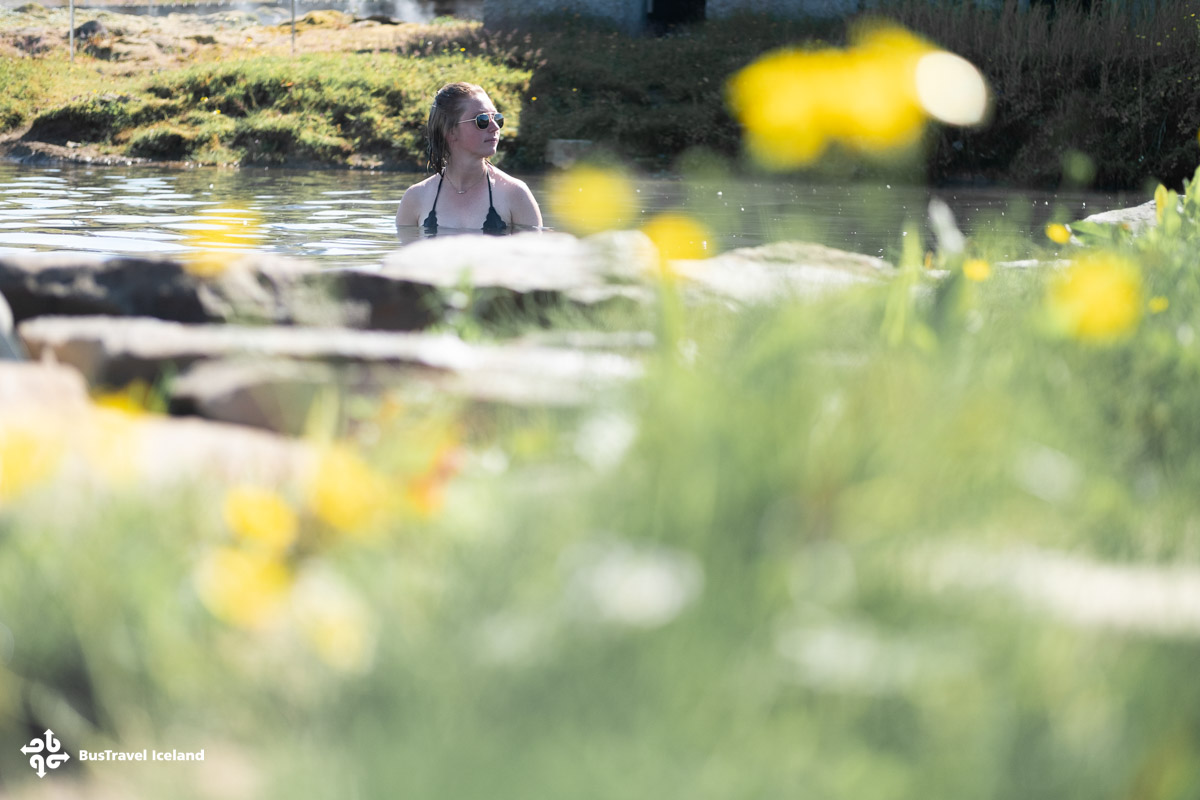
Laugarvatn Fontana Geothermal Spa & Fontana Café
Laugarvatn Fontana Geothermal Spa, located on the shores of Lake Laugarvatn, offers a unique wellness experience within Iceland’s picturesque landscapes. This serene oasis boasts a range of hot pools and steam baths, all naturally heated by the earth’s geothermal energy.
The spa’s centerpiece is a series of interconnected pools with varying temperatures, allowing you to tailor your relaxation. Be sure to indulge in the steam baths, which utilize the geothermal heat to create a detoxifying and rejuvenating atmosphere. With its blend of nature’s tranquility and soothing geothermal waters, Fontana Geothermal Spa is a haven for unwinding and connecting with Iceland’s elemental beauty.
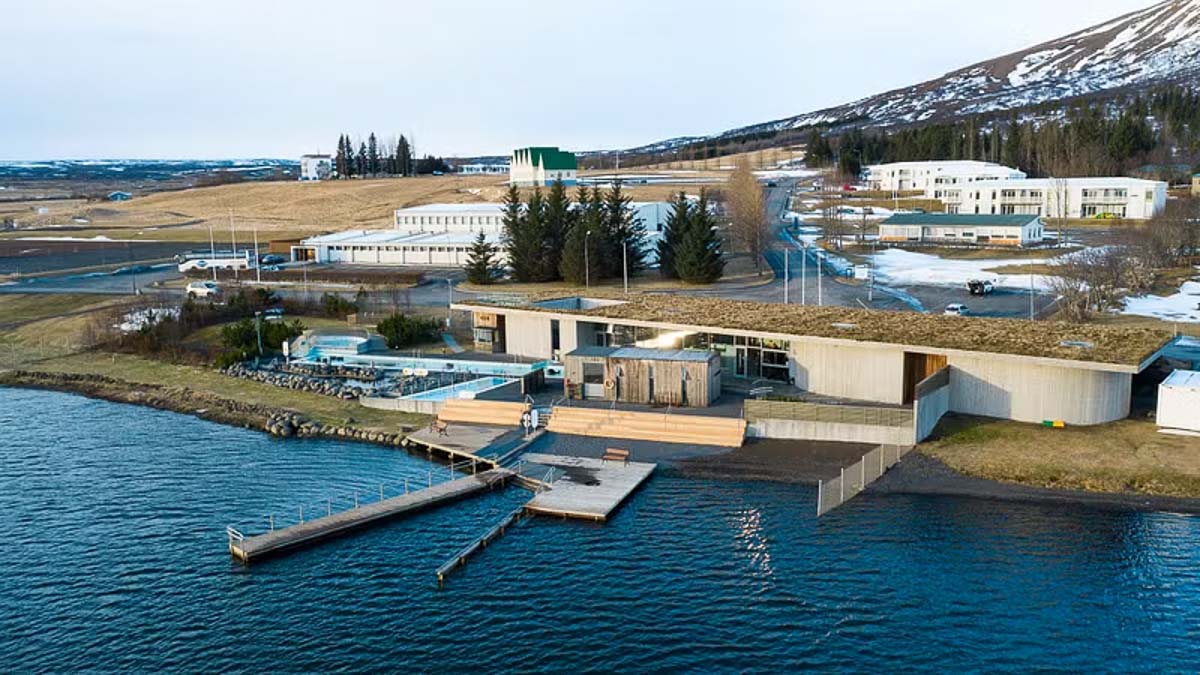
At the heart of this experience lies Fontana Café, renowned for its lava-baked bread, also known as ‘hot spring baked bread.’ In Iceland’s unique geothermal landscape, where pockets of bubbling hot water dot the terrain, it’s an ingeniously traditional way to bake bread under the hot black sands.
The café’s fare perfectly complements this delicacy, with options like Icelandic butter paired with smoked salmon or trout. Beyond this culinary delight, the cafe also offers soups, snacks, and quick meals, making it an ideal spot to replenish energy after your relaxing spa time.
Bruarfoss Waterfall
Known as the “Blue Waterfall,” Bruarfoss Waterfall is renowned for its striking cerulean hues that result from glacial meltwater filtering through surrounding lava fields. A hidden treasure on the Golden Circle Route, it’s a favorite among self-driving explorers.
Accessing Bruarfoss requires a moderate hike, adding an element of adventure to the experience. As you navigate through rocky terrain and across narrow wooden bridges, the anticipation builds, rewarding you with the mesmerizing sight of the waterfall’s ethereal blue cascades.
Unlike other well-known Icelandic waterfalls, Bruarfoss maintains a sense of tranquility due to its relatively hidden location. Its secluded nature offers a peaceful backdrop for contemplation and appreciation of Icelandic nature’s wonders.
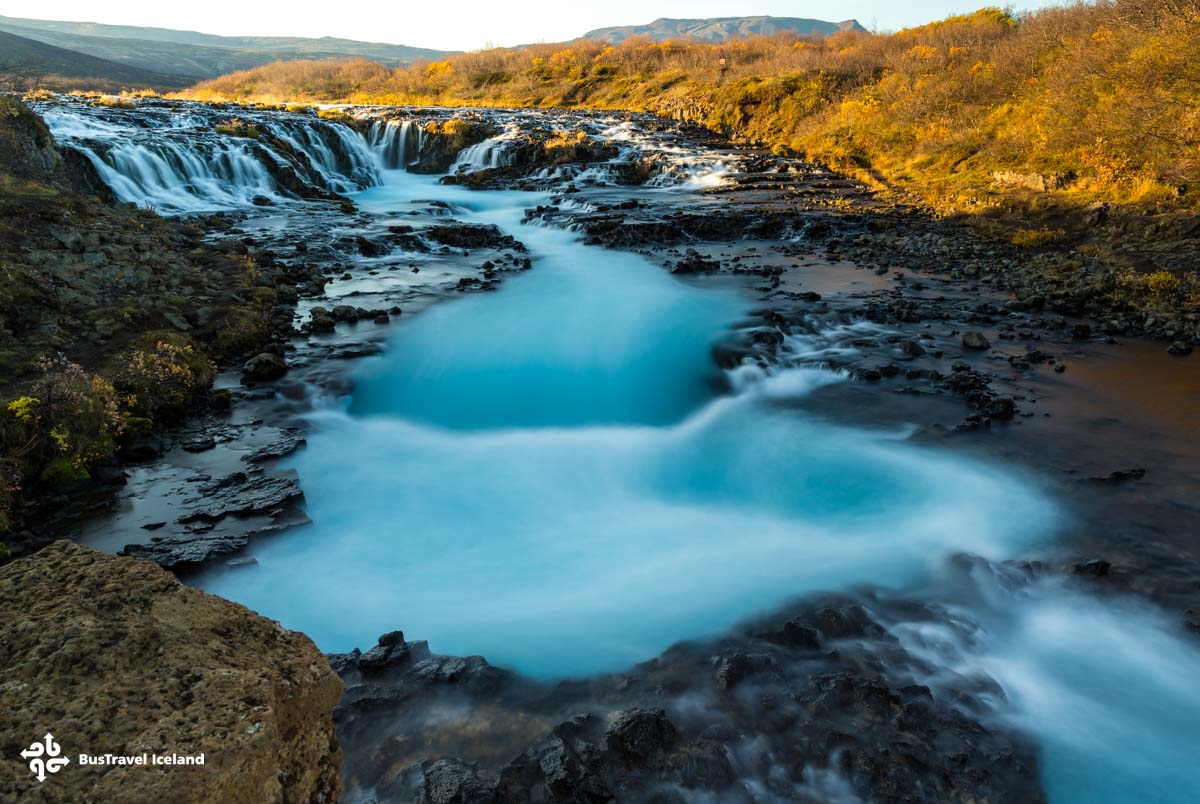
Natural Wonders and Geological Significance
The Golden Circle holds profound significance within Iceland, encapsulating the country’s natural and historical essence. This iconic route links together three prominent attractions—Thingvellir National Park, Geysir Geothermal Area, and Gullfoss Waterfall—each representing Iceland’s geological wonders, ancient heritage, and beautiful landscapes.
The Golden Circle of Iceland unveils the eternal interaction between tectonic plates. At Thingvellir National Park’s Almannagjá Gorge, you stand at the fissure between the North American and Eurasian plates. These colossal landmasses shift imperceptibly each year, a tangible reminder of Earth’s dynamic nature.
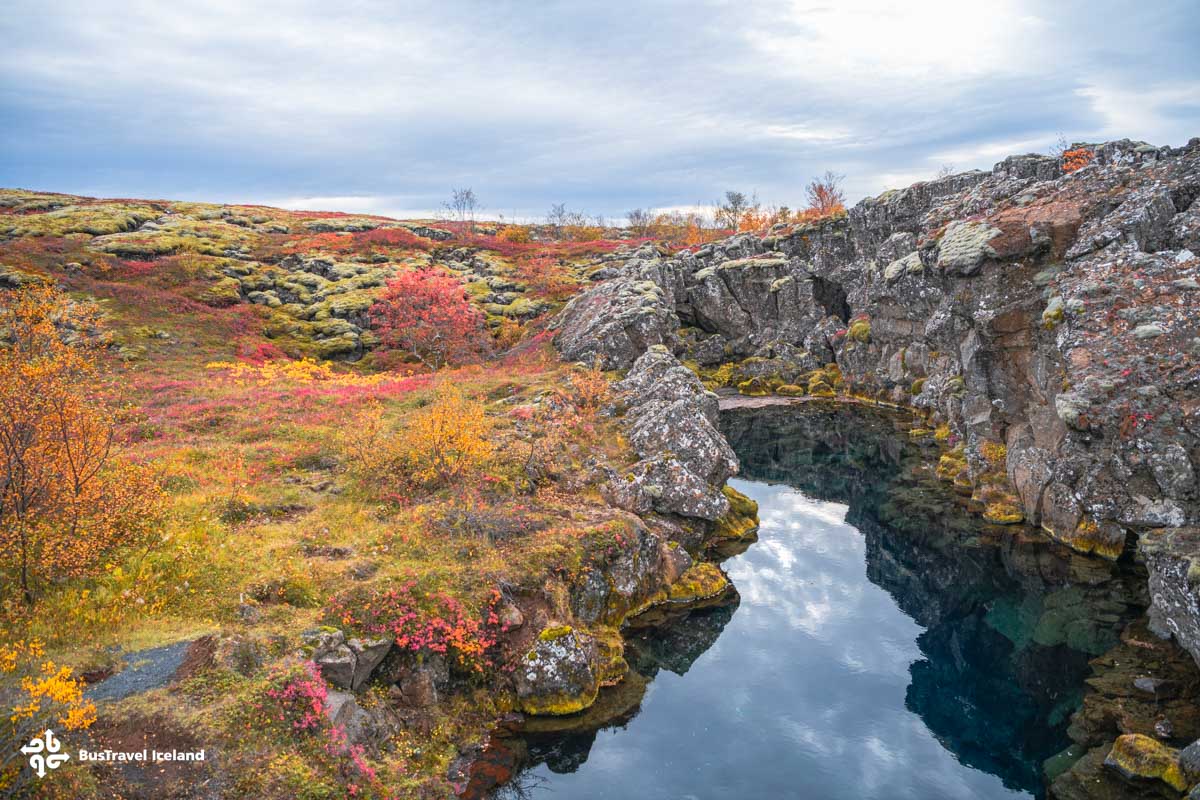
The rift showcases the Mid-Atlantic Ridge’s visible part, as it traverses beneath the Atlantic Ocean. This geologically active region fuels the geothermal wonders of the Golden Circle. As you journey through this remarkable route, you witness not only Iceland’s breathtaking landscapes but also the tectonic forces that continually shape and reshape our planet.
